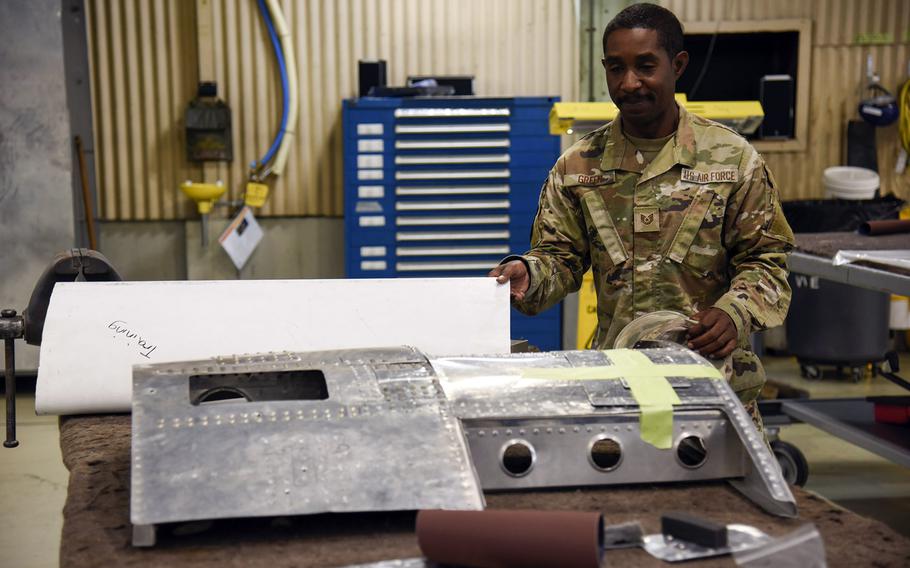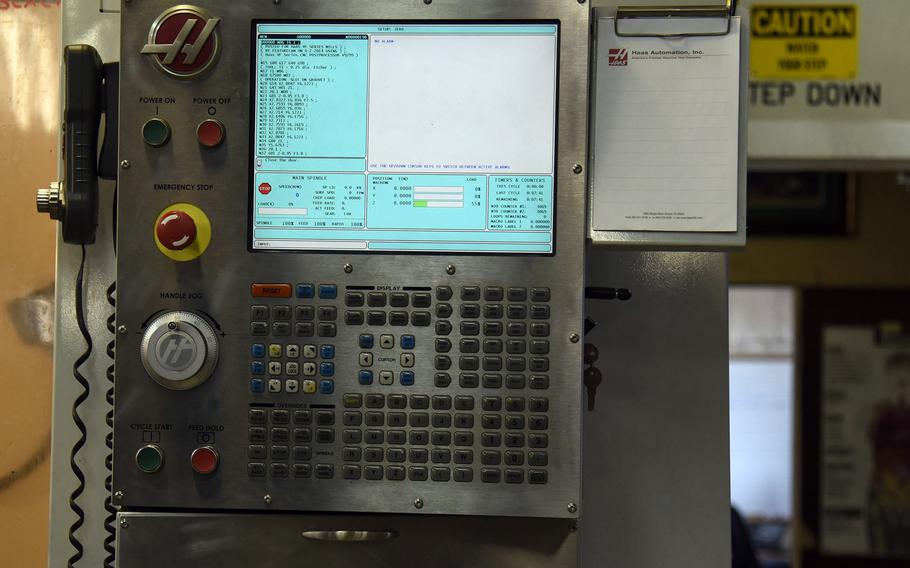
Air Force Tech. Sgt. Steven Green, the 374th Maintenance Squadron's fabrication flight chief, shows off training materials at his shop on Yokota Air Base, Japan, July 28, 2023. (Juan King/Stars and Stripes)
YOKOTA AIR BASE, Japan — When disaster struck Japan on March 11, 2011, the U.S. military pitched in to help the survivors of a magnitude-9 earthquake that generated a devastating tsunami.
The twin disasters accounted for about 20,000 fatalities, 6,000 injured and 470,000 people displaced from their homes in the Tohoku region of northeastern Japan.
The tsunami spawned another crisis when it overwhelmed reactors at the Fukushima Daiichi nuclear power plant, cutting power to water pumps, which led to a partial meltdown of three radioactive reactor cores.
The U.S. military pitched in with Operation Tomodachi, a monthslong relief effort that marshaled about 20,000 service members, 20 ships and 160 aircraft. They took on search-and-rescue and supply missions and kept commercial air traffic moving through Tokyo.
Little publicized was work by an Air Force maintenance shop at Yokota, the U.S. airlift hub in western Tokyo, to quickly fabricate metal fittings for water pumps at the three reactors.
The 50-foot tsunami severed electrical power to the reactors, shutting down pumps that circulate cooling water, causing the reactors to overheat and their radioactive cores to begin melting.
Japanese authorities turned to the 374th Maintenance Squadron’s metals technology shop for help fabricating pipes to move ocean water to cool the reactors.
Air Force Tech. Sgt. Steven Green, today the squadron’s fabrication flight chief, recently recalled his section’s contribution.
“They had the pipes for the ocean and the piping for the nuclear reactor, but had no way to connect the two, so our metals technology shop manufactured the connection point,” Green said during a July 28 tour for visiting Japanese journalists.

Japanese authorities turned to the 374th Maintenance Squadron’s metals technology shop for help fabricating pipes to move ocean water to cool reactors at the Fukushima Daiichi nuclear power plant in 2011. (Juan King/Stars and Stripes)
The base arranged the media tour to recount its contribution “to a nationwide disaster relief effort,” according to base spokeswoman Kaori Matsukasa on Tuesday. The tour also provided Japanese media with information about Yokota’s operations and maintenance capabilities.
The journalists also stopped at the maintenance squadron’s isochronal and transient alert sections and the 459th Airlift Squadron, where airmen explained their units’ parts in Operation Tomodachi.
“Tomodachi has taught us that we need to be more ready,” Tech Sgt. Joshua Esparza, chief of the maintenance squadron’s isochronal flight, told the journalists. “Some of the shortfalls that we had, we learned a long lesson like that.”